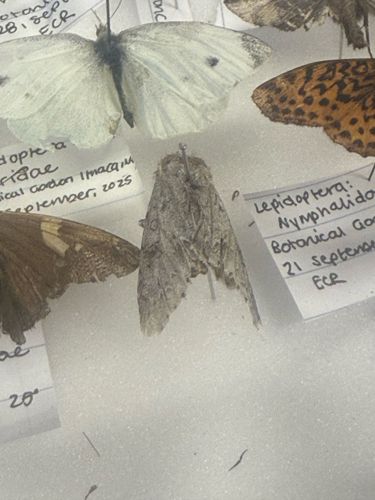Cabbage White Butterfly (pinned specimen)
Scientific Name: Pieris rapae
Order & Family: Lepidoptera: Pieridae
Size: Wingspan typically ranges from 32 to 50 mm (1.3 to 2.0 inches).

Natural Habitat
The Cabbage White Butterfly is highly adaptable and can be found in a wide variety of habitats, including gardens, agricultural fields, meadows, parks, and disturbed areas where host plants (cabbage, broccoli, kale, etc.) are present.
Diet & Feeding
Adult Cabbage White Butterflies feed on nectar from various flowers. Their caterpillars (cabbage worms) are herbivorous, primarily feeding on brassicaceous plants (Family Brassicaceae), such as cabbage, broccoli, cauliflower, kale, and other related cultivated and wild species.
Behavior Patterns
Cabbage Whites are diurnal and strong flyers. Males often patrol to find females. Females lay individual eggs on the underside of host plant leaves. The caterpillars are voracious feeders and can cause significant damage to crops. They undergo complete metamorphosis, forming a chrysalis before emerging as adults. They typically have multiple generations per year.
Risks & Benefits
Potential Risks: The caterpillars (cabbage worms) are considered agricultural pests, causing significant damage to brassicaceous crops, leading to economic losses for farmers. Potential Benefits: As adults, they act as pollinators, contributing to the reproduction of various flowering plants. They are also part of the food chain, serving as food for birds and other insectivores.
Identified on: 11/20/2025